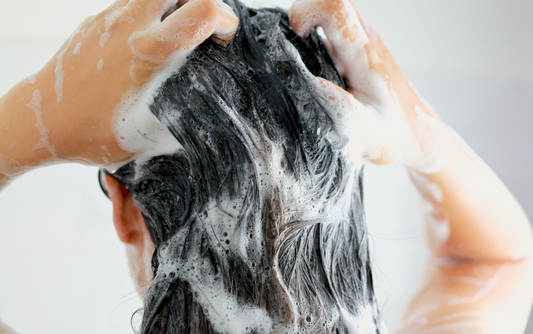Soy Wax vs Paraffin Wax

One of the biggest debates in the candle making world is which wax is better, soy wax or paraffin wax. It can be incredibly difficult to find completely unbiased information on this topic. Most articles available online these days are skewed in some way towards whichever wax the writer favors. In this blog, our goal is to provide an entirely impartial assessment of both waxes so that you can decide for yourself which one will best suit your needs.
Paraffin Wax: The Good and The Bad
According to Wikipedia, paraffin wax was created for the first time in 1830 in Germany by Carl Reichenbach. It was a great advancement in candle making technology as most candles up to that point were made using tallow, a wax derived from animal fat. Paraffin burned cleaner and more reliably and was less expensive to produce than tallow. Aside from candle making, paraffin wax has a wide variety of applications including being used to make crayons and lubricants as well as for therapeutic spa treatments and being an excellent wood finishing product.
Paraffin wax for candle making is a white odorless substance that is a natural by-product of the petroleum refining process. The average melt point of paraffin wax is 131°F. Early on, paraffin wax suffered from being too soft and having a very low melting point. This would cause candles made from paraffin wax to burn more quickly than its tallow candle predecessors. To resolve this issue, stearic acid was added to the wax to make it harder and give it a higher melting point.
You can find a paraffin wax for any type of candle you want to create. There are different kinds of paraffin wax whether you want to make free standing pillar candles, votives or container candles. It’s long history in the candle industry has given makers time to really explore all it’s uses quite thoroughly.
Over the years, paraffin wax has gained a bad reputation as a wax that can be harmful to the health of those who burn candles that are made with it. There have been several studies stating that burning paraffin wax in candles releases toxins that can cause health issues including cancer.
Healthline.com states that a 2009 study by South Carolina State University researchers found that burning paraffin wax releases potentially dangerous chemicals, such as toluene. The National Candle Association and the European Candle Association both refuted this study, pointing to the lack of reviewable data and unsupported claims. This study was never published in any peer-reviewed journals and is no longer available on the South Carolina State University website.
The European Candle Association funded a 2007 study which analyzed every major type of wax for 300 toxic compounds. The study found that all the waxes burned cleanly and safely, with no noteworthy differences in burning behaviors when made properly. Their combustion by-products were virtually identical in composition and quantity. They were also far below even the most restrictive of indoor-air quality standards. Therefore, currently there is no definitive proof that burning any candle wax is harmful to your health.
A major benefit of using paraffin wax in your candle making is that it offers excellent hot and cold scent throw. Paraffin wax is less dense than soy wax and can hold larger amounts of fragrance oil. This means that its melt pool has more fragrance to distribute, and the light paraffin wax particles are able to carry the fragrance further than soy wax particles can. Candle market titans like Yankee Candles and Bath and Body Works, have built empires selling candles that are mainly made from paraffin wax due in large part to its amazing scent throw.
Paraffin wax’s biggest downfall is that it comes from a non-renewable resource. As long as the oil industry is refining oil, paraffin wax will be readily available. However, as human consumption of oil continues to increase at rapid rates and supplies continue to be depleted, it is conceivable that one day the well could dry up. While this doesn’t appear to be something that will occur anytime soon, it is still a possibility.
Positive and Negative Aspects of Soy Wax
Even though paraffin wax remains the number one wax in the world used for candle making, the popularity of soy wax has been increasing by leaps and bounds since its inception. Soy wax was invented by Michael Richards in 1991 while he was trying to find an eco-friendly alternative to paraffin wax and a less expensive alternative to beeswax.
Soy wax is made by extracting soybean oil from soybeans and then putting it through a hydrogenation process that changes some of the fatty acids in the oil from unsaturated to saturated. This process allows the oil to remain as a solid when it is at room temperature and drastically increases the melting point. The average soy wax melting point is approximately 124°F.
In its most natural form, soy wax is not as versatile as paraffin wax for candle making. Its low melting point makes it most suitable for container candles. It also doesn’t take dyes very well as it tends to mute colours and brings attention to soy wax’s natural “frosting” tendencies. Crystals form in the wax due to its reaction to time and temperature changes. While this doesn’t affect its performance as a candle, it is a less than desirable cosmetic defect.
When it comes to scent throw, soy wax offers a strong cold throw but tends to fall short of its paraffin rivals when it comes to hot throw due to its dense composition. Even so, soy wax candles can still offer a lovely aroma when wicked properly.
Another tricky thing with soy wax is how it can vary from one batch to the next. In the same way that different factors can affect the quality of a soybean crop (i.e., temperature, humidity, health of the crop, quality of the seeds) these same factors and more can affect the soy wax created from that crop. While soy wax manufacturers do have a set of quality control criteria that their wax must comply with, it’s not uncommon for candle makers to notice slight variances in their wax every time they purchase.
Over the years, soy wax producers have been developing soy wax blends to improve its versatility and stability for candle making. Additives like stearic acid have been combined with soy wax to increase its melting point, improve scent throw, reduce “frosting” and produce more vibrant colours.
Some of the most appealing aspects of soy wax is that it is a natural, sustainable, and biodegradable wax. While environmentally friendly candle makers love to hear and tout this information, the World Wildlife Fund states that “without proper safeguards, the soybean industry is causing widespread deforestation and displacement of small farmers and indigenous peoples around the globe.”
Conclusion
As you can see, both soy wax and paraffin wax come with their own set of pluses and minus, and it’s up to the candle maker and their customers to determine which wax is best for them.
Once you have selected your wax, the most important thing you can do as a candle maker is to get to know your wax as well as you can. Test, test, and test some more! Knowing how to take advantage of your wax’s strengths can also help draw attention away from any weaknesses it may have.
The bottom line is, when made properly both paraffin wax candles and soy wax candles can create a stunning and beautifully aromatic atmosphere that will keep your customers coming back for more. So which wax comes out on top in the soy vs paraffin battle? We call it a draw.





